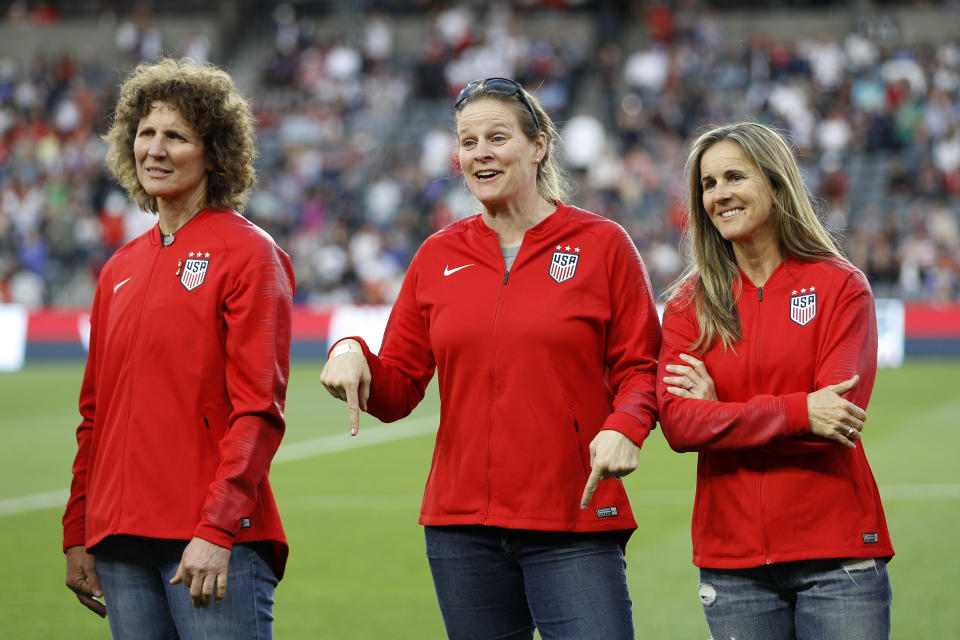USWNT 99ers Michelle Akers, Brandi Chastain help launch landmark CTE study for women's soccer

Former USWNT players Michelle Akers and Brandi Chastain, who sent the U.S. to its 1999 World Cup title, are the first to take part in a landmark study researching Chronic Traumatic Encephalopathy (CTE) in female soccer players.
Football is the sport most often associated with concussions and CTE, yet it’s far from the only sport to face concerns of long-term effects stemming from head injuries. Studies find concussions rates are similar or higher in girls soccer, but up until now these athletes have been omitted from CTE studies.
"This is the first time they're looking at female soccer players, female brains and it's important to have this conversation. This needs to be looked at equally for women and men, and until now, it hasn't been."
The program, called SHINE for Soccer, Head Impacts and Neurological Effects, will be led by Boston University’s Dr. Robert Stern, clinical research director for BU's CTE center. It is be funded by the Concussion Legacy Foundation and the National Institute on Aging.
Akers worries about migraine, headers connection
Akers spearheaded the study after she failed to find any information on CTE and soccer players, per ESPN. She connected with Stern and so far about 10 players have signed on to participate, she said. Cindy Parlow Cone, a former USWNT midfielder and the Portland Timbers head coach, is one of them.
Akers, who played on the 1991 and 1999 World Cup title teams, dove into research because of migraines and memory lapses she worries are a result of heading the ball.
From CBS News, which first reported the story Thursday on “CBS This Morning”:
"I was the one, the target. So I won every punt by the goalkeepers ... As far as headers went … usually 50 a game."
Akers said she’s unsure if there’s any connection, but wants an open conversation and research to provide answers if they’re there.
Chastain does 180-degree turn on headers
In 2016, Chastain pledged to donate her brain to CTE research for study upon her death and was one of the first women athletes to do so. She told “CBS This Morning” she occasionally has trouble remembering details or people’s names, but like Akers isn’t sure if it’s from aging — both are in their 50s — or a soccer career.
As a mother, new grandmother and youth soccer coach, Chastain said she’s changed her views on headers.
"I have absolutely done a 180 on that," she said, adding "Heading five-story punted balls, no, not gonna happen. We're not doin' that.
"We can't ignore this anymore," she said. "It's not something we can just say, 'okay, tough it out.' it's not that."
CTE study launched for female soccer players
The study will follow former players over the age of 40 who played at least five years of organized soccer, at least two of which were after high school and one at professional level, per ESPN. Doctors will take baseline testing of the brain and evaluate cognitive function.
Stern said the concern is “subtler repeated hits” to the head, per “CBS This Morning,” that’s known as “sub-concussive trauma.”
As is not uncommon in medical studies, up until now women have been left out of the conversation about CTE and its impact despite knowledge concussions are a problem in girls sports as well.
Boston University released its study of NFL players’ brains in 2015 and found CTE in most of the deceased players it studied. It’s a difficult disease to study and draw conclusions and the sample size can be small, with singular anecdotes that dominate headlines and cause concern.
More from Yahoo Sports:

